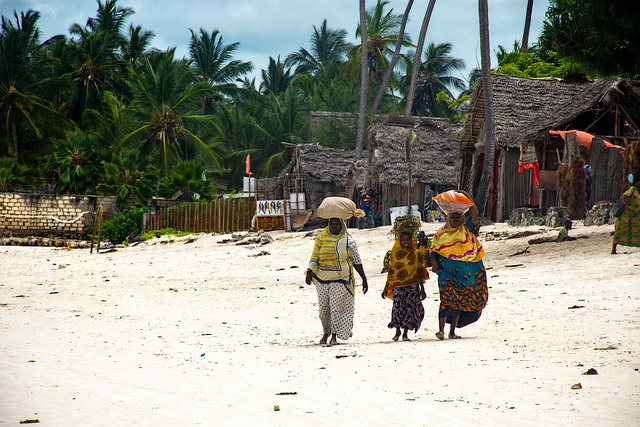The contemporary political and social landscape of Africa is profoundly shaped by its colonial past. One of the most significant legacies of European imperialism on the continent is the arbitrary division of land into national borders with little regard for ethnic, cultural, or historical realities. These colonial borders, largely determined by European powers during the Berlin Conference of 1884-1885, have played a pivotal role in fueling many of Africa’s post-independence conflicts.

The Berlin Conference and the Partition of Africa
Historical Background
The Berlin Conference, held between 1884 and 1885, was a meeting of European powers aiming to regulate colonization and trade in Africa. The conference effectively divided the continent among the imperial powers—Britain, France, Germany, Belgium, Portugal, Italy, and Spain—without the participation of any African representatives.
As a result, borders were drawn based on European economic and strategic interests rather than the existing socio-cultural and ethnic landscapes. According to research by Alesina, Easterly, and Matuszeski (2011), over 80% of African borders disregard traditional ethnic boundaries, resulting in the fragmentation of over 177 ethnic groups across two or more countries.
The Consequences of Arbitrary Borders
Ethnic Fragmentation and Inter-group Conflicts
The splitting and forced amalgamation of diverse ethnic groups into singular political entities has been a major driver of conflict in Africa. Theories of ethnic fractionalization suggest that increased heterogeneity within states elevates the risk of political instability and violent conflict (Fearon & Laitin, 2003).
For example, the artificial fusion of the Yoruba, Hausa-Fulani, and Igbo peoples within Nigeria under British colonial rule created a deeply divided state. These divisions culminated in the Biafran War (1967–1970), a devastating conflict fueled by ethnic and regional tensions.
Similarly, the Hutu and Tutsi populations, divided by colonial administrative policies between Rwanda and Burundi, experienced severe violence, culminating in the Rwandan Genocide of 1994. Studies have shown that colonial policies exacerbated pre-existing divisions, transforming social categories into rigid ethnic identities.
Cross-border Conflicts
Colonial borders also created “borderland” regions where kinship groups straddle multiple national jurisdictions, often leading to interstate tensions. The Somali people, for instance, are dispersed across Somalia, Kenya, Ethiopia, and Djibouti. This dispersion has fueled irredentist claims, such as the Somali invasion of Ethiopia’s Ogaden region in 1977, leading to the Ogaden War.
As noted by Englebert, Tarango, and Carter (2002), African borders have generally been maintained according to the principle of uti possidetis juris—the legal doctrine that colonial boundaries should be preserved post-independence to avoid further conflict. However, this approach has often failed to prevent cross-border insurgencies and has contributed to the persistence of regional instability.

Case Studies: Conflict Rooted in Colonial Borders
Sudan and South Sudan
The division of Sudan into the predominantly Muslim North and Christian/Animist South is a classic example of colonial border-induced conflict. The British colonial administration governed the two regions separately, fostering distinct political and socio-economic identities.
Post-independence, the Southern population resisted domination by the North, leading to two civil wars (1955–1972 and 1983–2005) and eventually, the secession of South Sudan in 2011. Even after independence, border disputes such as those over the oil-rich Abyei region continue to plague relations between the two states.
Democratic Republic of Congo (DRC)
The DRC, formerly the Belgian Congo, is one of Africa’s most resource-rich yet conflict-prone nations. Its borders encompass over 250 ethnic groups, many of which have transboundary ties with neighboring countries such as Rwanda, Uganda, and Burundi.
The First and Second Congo Wars (1996-1997; 1998-2003), often described as “Africa’s World War,” were fueled by ethnic rivalries exacerbated by colonial borders, as well as competition over natural resources. Research by Autesserre (2010) emphasizes that the complex interplay of local, national, and regional disputes within the colonial-era boundaries of the DRC has perpetuated cycles of violence.
Theoretical Perspectives
Instrumentalist vs. Primordialist Approaches
Scholars have debated whether ethnic identities in Africa are “primordial”—deep-rooted and historically constant—or “instrumental”—constructed and manipulated for political purposes. The instrumentalist school argues that ethnic divisions in Africa were politicized by colonial rulers through strategies such as indirect rule and divide-and-conquer policies.
This politicization was often institutionalized through differential access to education, employment, and political representation. For instance, the Belgian administration in Rwanda favored the Tutsi minority, sowing seeds of resentment that later erupted into genocidal violence.
Pathways for Addressing the Legacy
Regional Integration and the Role of the African Union
Recognizing the challenges posed by colonial borders, African leaders have increasingly emphasized regional integration as a pathway toward reducing interstate conflict. Organizations such as the African Union (AU) and the Economic Community of West African States (ECOWAS) promote cooperation on security, economic development, and governance.
The AU’s Border Programme (AUBP), established in 2007, seeks to peacefully resolve border disputes through delimitation and demarcation processes. According to a 2020 AU report, over 30% of African borders remain undemarcated, highlighting the urgency of such initiatives.
Decentralization and Inclusive Governance
Another approach involves fostering inclusive political institutions that accommodate ethnic diversity. Decentralization of power can mitigate ethnic tensions by granting minority groups greater autonomy over local governance.
eqp
Ethiopia’s federal system, which grantsh
Hsignificant autonomy to ethnically defined regional states, represents a controversial yet instructive example. While it has provided a framework for self-determination, it has also fueled secessionist movements and inter-ethnic violence, as seen in the ongoing Tigray conflict.
Reconciliation and Transitional Justice
Efforts at transitional justice, such as truth commissions and reparations, can also address the historical grievances rooted in colonial-era divisions. The South African Truth and Reconciliation Commission is frequently cited as a model for addressing the legacies of apartheid and colonialism through public acknowledgment of past injustices.
Conclusion
The legacy of colonial borders continues to shape Africa’s political, social, and economic realities. While these borders may be “immutable” in a legal sense, their socio-political consequences are far from static. From civil wars to interstate conflicts, the historical imposition of arbitrary boundaries has had profound and often tragic consequences.
Addressing these challenges requires nuanced policies that acknowledge historical legacies while promoting regional cooperation, inclusive governance, and conflict resolution mechanisms. Only by understanding the root causes of modern African conflicts can sustainable peace and development be achieved.
